Colorful to say the least, this tiny bird is covered in an electric combination of green, lemon-yellow and white, topped off by his signature metallic purple!
Meet the Purple-rumped Sunbird
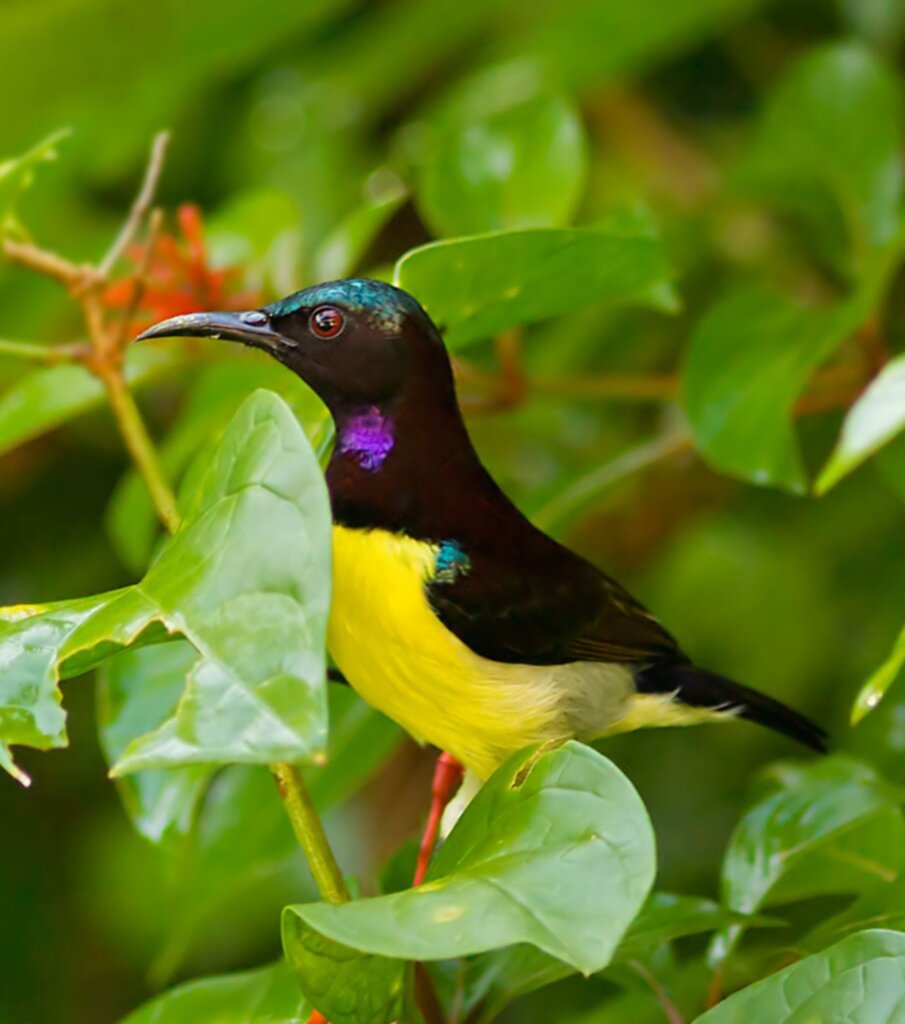
Photo (cropped) Courtesy of CLpramod / CC BY-SA 4.0
The purple-rumped sunbird (Leptocoma zeylonica) measures less than 4 inches (10 cm) in length wearing a down-curved bill and brush-tipped tongue which is perfect for feeding on nectar. Sexually dimorphic birds, the male is dark maroon above with a blue-green crown and a throat and rump that is glossy, bright purple. He has a maroon chest band, sides of the head, and back. He also has bright green shoulder patches and underparts are yellow along with white flanks.
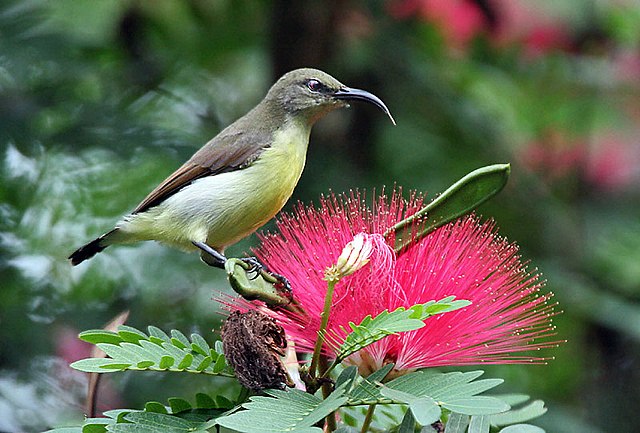
Photo Courtesy of J.M.Garg / CC BY-SA 3.0
Female birds are somewhat duller with an olive-green back, brown wings, white throat, and a yellowish chest.
Juvenile birds look more like their female counterparts.
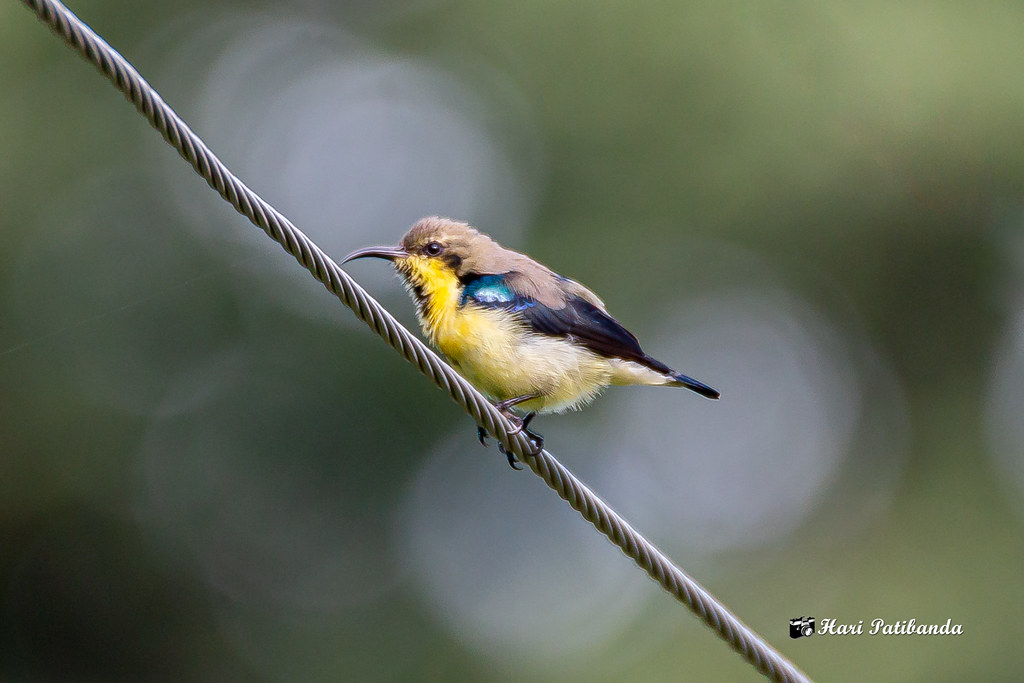
“Purple Rumped Sunbird” by Hari K Patibanda is licensed under CC BY 2.0.
This bird is endemic to the Indian subcontinent.

“Purple Rumped Sunbird” (cropped) by Hari K Patibanda is licensed under CC BY 2.0.
They can be found in a variety of habitats with trees, including scrub and cultivation, and is usually absent from dense forest.
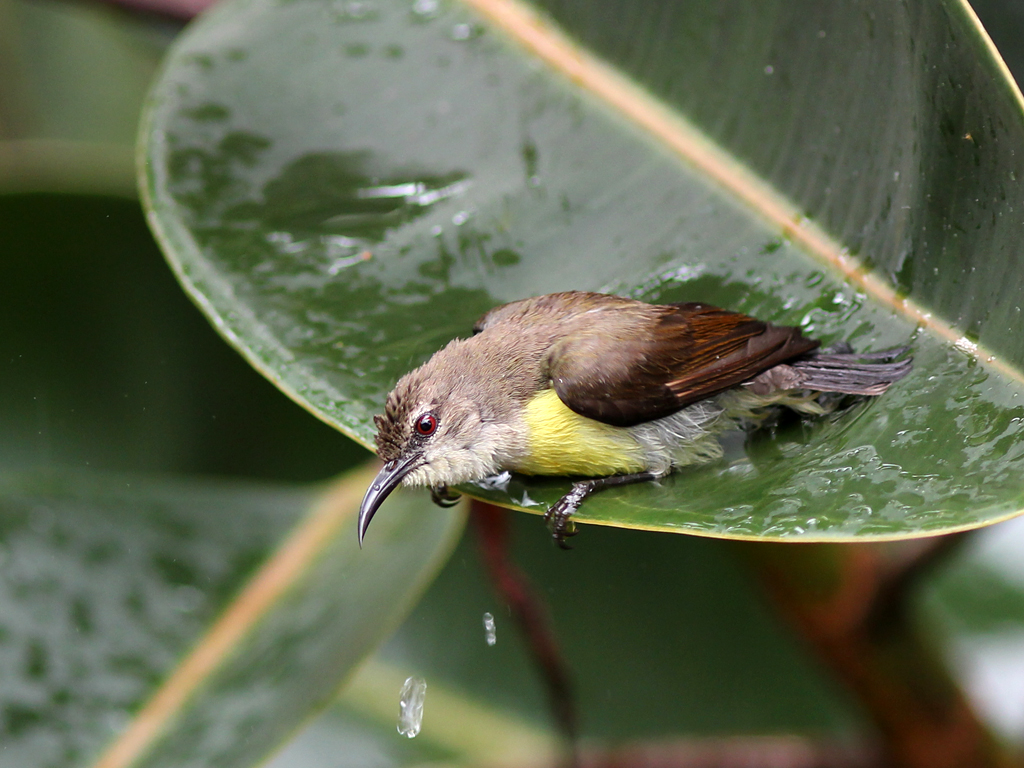
“Purple-Rumped Sunbird (F)” by SivamDesign is licensed under CC BY-SA 2.0.
Purple-rumped sunbirds dine mostly on nectar, sometimes hovering in front of flowers like hummingbirds do. Though they are more likely to perch next to a flower while feeding. They will also eat insects and take honeydew exuded by leafhoppers.
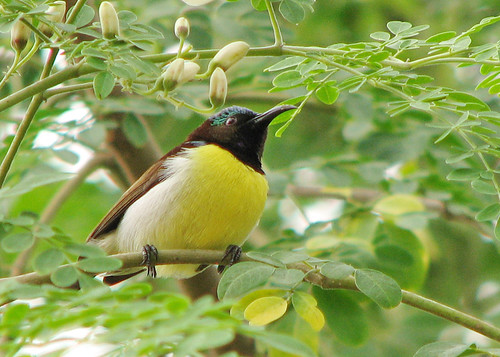
“Purple Rumped Sunbird” by wildxplorer is licensed under CC BY 2.0.
Purple-rumped sunbirds are able to breed year-round but is more likely during the monsoon season. During this time the female weaves a nest out of plant fibers, and cobwebs. The interior is lined with soft fibers and usually placed at the end of a branch. An average of two oval green and white eggs flecked with spots and streaks are laid within and incubated by both parents for 14 to 16 days and raised with the help of other females and offspring from previous seasons.
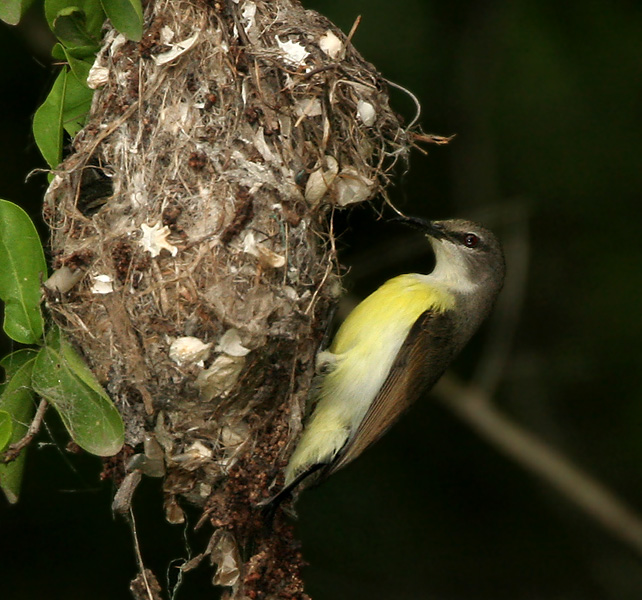
Photo Courtesy of J.M.Garg / CC BY-SA 3.0
The young are fledged after they are 17 days.
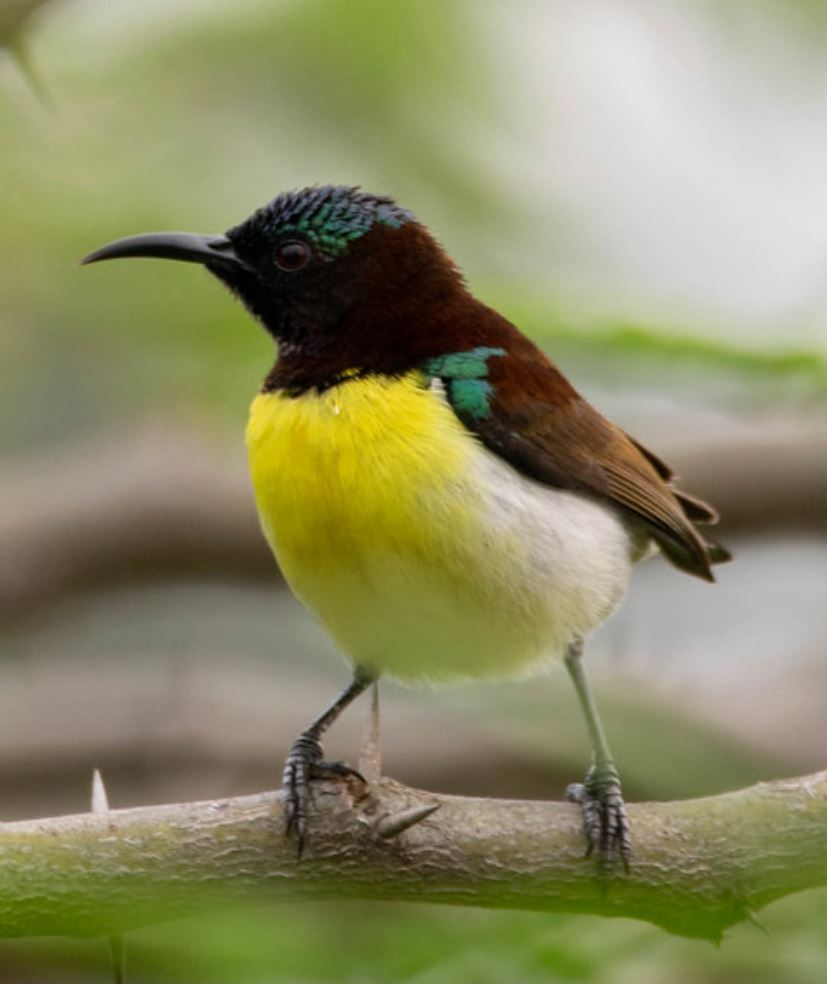
“Purple rumped Sunbird” (cropped) by pointn’click is licensed under CC BY 2.0.
This bird is regarded as of Least Concern on the IUCN Red List.
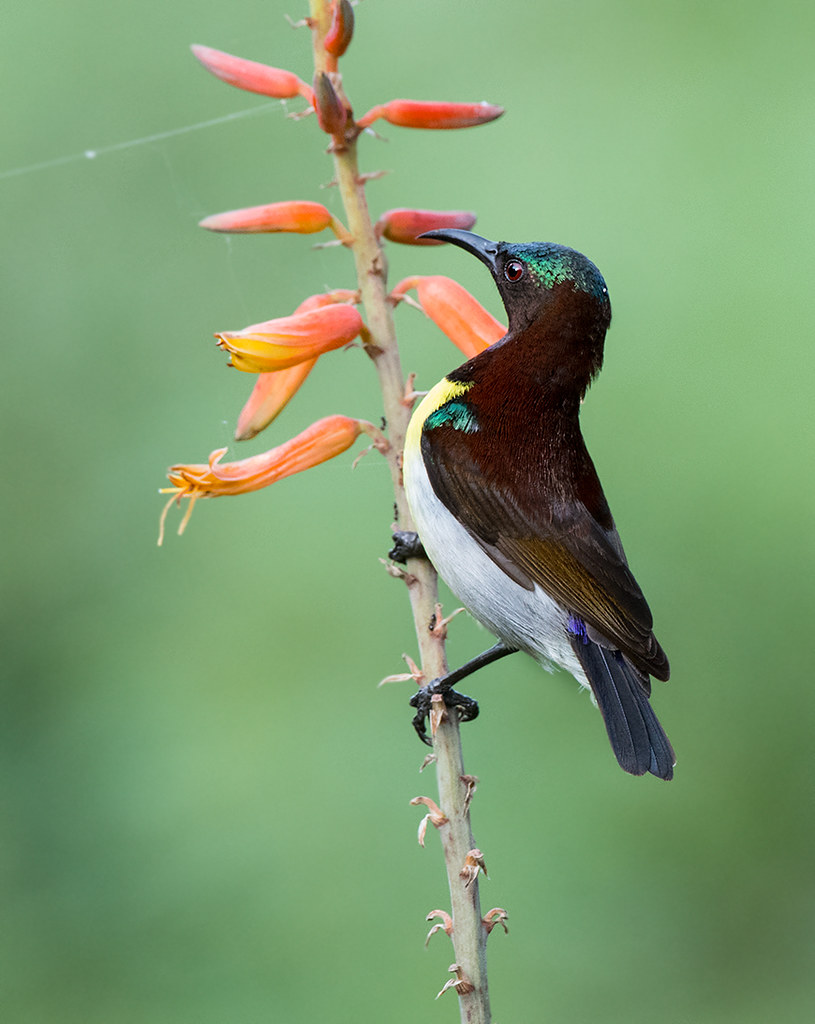
“Purple-rumped Sunbird” by Koshyk is licensed under CC BY 2.0.
You can watch and listen to this bird right here in the video below:




